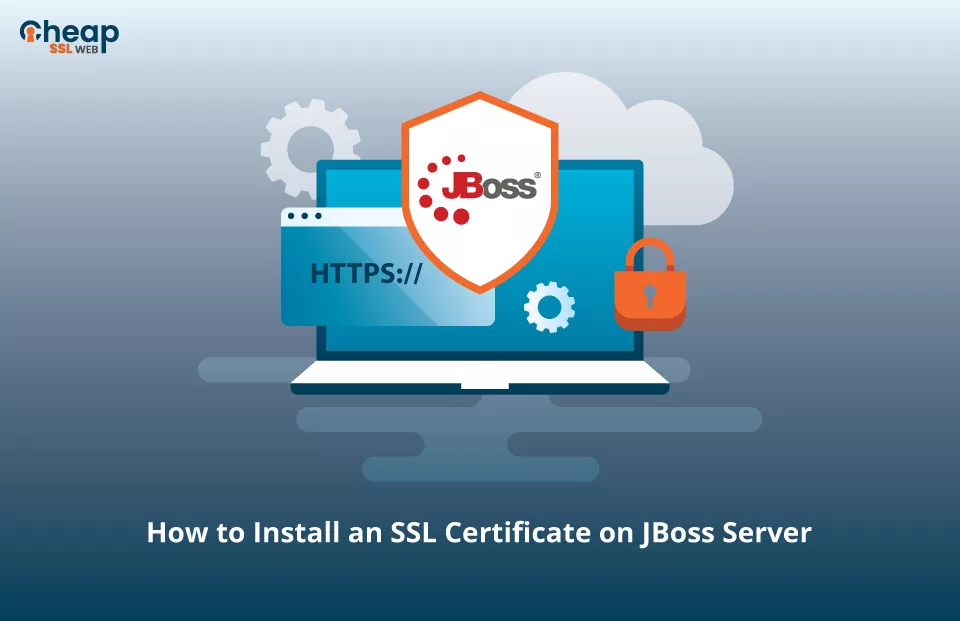How to Install an SSL Certificate in JBoss?

Step-by-Step Guide to Install an SSL Certificate on a JBoss Server
Want to install an SSL certificate on a JBoss Server but don’t know how to do it? Don’t worry; in this article, we will explain each step that you need to follow to achieve your goal.
Installing an SSL certificate on JBoss is a straightforward process that only involves three steps, such as:
- Unzipping and downloading the .zip folder contents
- Copying the SSL certificate contents
- Importing the certificate on the server
Before we can begin explaining how to do it or the complete process, there are two prerequisites that must be generated, and those are:
- Private Key
- CSR
Note: To create a private key and a keystore, use the below-given command:
keytool -genkey -alias create_Privatkey_Alias -keyalg RSA -keystore path_and_create_KeystoreFilename.jks -keysize 2048Now, the next question that you might have would be – How to generate CSR? To accomplish this, there are two steps, and you can either:
- Use a CSR Generator tool, or
- Do it manually
Note: A certificate signing request (CSR) is an encoded text that is sent to a CA so that they can verify your company’s or website’s identity.
Installing an SSL certificate on JBoss
Let’s continue with the main topic – installing an SSL certificate on a JBoss Server. We are assuming that you are using any one of these web server:
- Tomcat
- Jetty
Note: In case you are utilizing JBoss EAP 7 or a newer version, it will be necessary to import both the SSL certificate and the private key into a Java keystore.
Step 1: Unzipping and downloading the .zip folder contents
After validating the CSR, the CA will send the SSL certificate files to the registered email id. There can be a delay in receiving those, depending upon the type of validation you have chosen for your website.
So, once you have received the mail, open it and download and extract all the files that are there in the .zip folder. Make sure that you have downloaded all the files listed below:
- Primary SSL certificate with either one of the extensions (.pem, .cer, or .crt)
- Intermediate SSL certificate having .ca bundle extension
- Private Key file having .key extension
Step 2: Copying the SSL certificate contents
Now the next step that you need to perform is to transfer the information of your SSL Certificate, along with the markers “—–BEGIN CERTIFICATE—–” and “—–END CERTIFICATE—–,” to a text editor, such as Notepad or TextPad. Once you have copied the information, save the file with a “.crt” extension.
Again the same process has to be followed for the Intermediate SSL certificate having a .ca bundle extension. Transfer the certificate information, along with the markers, and save it on a single file with a “.crt” extension.
Step 3: Importing the certificate onto the server
To import SSL Certificate into the keystore, use the command given below:
keytool -import -alias your_alias_name -trustcacerts -file ssl_certificate.crt -keystore your_keystore_filenameNote: While using the code, ensure that you input or enter the same Alias and Keystore names utilized while generating the CSR and Private Key. Follow the steps mentioned in scenario 1 if you are using Tomcat, and if you are using Jetty, follow the steps mentioned in scenario 2.
Scenario 1 (Tomcat):
- Search and open the server.xml configuration file.
- By using the find-shortcut (Ctrl + F), find the “Uncomment this for SSL support” line.
Uncomment the section shown below, and along with that, add the server key path:
<Connector className=" org.apache. Tomcat.service.PoolTcpConnector">
<Parameter name= "handler"
value= "org.apache.tomcat.service.http.HttpConnectionHandler"/>
<Parameter name= "port"
value= "8443"/>
<Parameter name= "socketFactory"
value="org.apache.tomcat.net.SSLSocketFactory" />
<Parameter name="keystore" value="/usr/java/jakarta-tomcat-3.2.2/server.keystore" />
<Parameter name="keypass" value="changeit" />
</Connector>
After completion, proceed to transfer the JSSE jars to the $TOMCAT_HOME/lib directory.
Scenario 2 (Jetty):
- Find the section in the $JBOSS_JETTY_HOME/conf/jetty/jetty.xml configuration file that starts with “Uncomment this to add an SSL listener“
- Remove the comment and then insert the location of your server key
<Call name="addListener">
<Arg>
<New class="com.mortbay.HTTP.SunJsseListener">
<Set name="Port">8443</Set>
<Set name="MinThreads">5</Set>
<Set name="MaxThreads">255</Set>
<Set name="MaxIdleTimeMs">50000</Set>
<Set name="Keystore"><SystemProperty name="jetty.home" default="."/>/etc/server.keystore</Set>
<Set name="Password">changeit</Set>
<Set name="KeyPassword">changeit</Set>
</New>
</Arg>
</Call>
Please reboot the server.
Testing the installation status
I recommend using SSL testing tools, such as SSL Checker, to verify that the installation on the server was successful and there are no potential threats that can cause trouble. With the help of this tool, you can find threats or issues instantly and get a detailed report regarding the same.
From where can I purchase an SSL certificate for JBoss Server?
Take action now and experience unbeatable SSL security at a competitive price with Cheap SSL Web! Don’t compromise on protecting your website – our partnerships with top SSL brands in the industry guarantee you the best possible security. Moreover, our exceptional support ensures your website is always in good hands.
